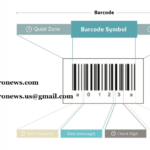Effective communication is the cornerstone of a thriving workplace. In today’s fast-paced and digitally driven environment, businesses are increasingly turning to employee communication apps to enhance collaboration and boost team engagement. These tools bridge the gap between employees, foster a sense of community, and provide seamless channels for sharing information. This article explores how employee communication apps can improve team engagement and create a more productive work environment.
Understanding Employee Communication Apps
Employee communication apps are digital platforms designed to facilitate seamless communication within an organization. These tools go beyond traditional email by offering instant messaging, video conferencing, task management, and file-sharing capabilities. Popular examples include Slack, Microsoft Teams, and Workplace by Meta.
The primary goal of these apps is to streamline communication, making it faster and more efficient. They allow employees to connect in real-time, share ideas, and collaborate on projects, regardless of their physical location. This is especially critical in the era of remote and hybrid work, where employees may not always be in the same office.
The Role of Communication in Team Engagement
Effective communication is crucial for fostering a positive work culture and boosting team morale. When employees feel heard and valued, they are more likely to be engaged and motivated. Conversely, poor communication can lead to misunderstandings, decreased productivity, and employee dissatisfaction.
Employee communication apps help bridge communication gaps by providing a centralized platform where employees can share updates, seek feedback, and stay informed. By ensuring that everyone is on the same page, these apps can significantly enhance team engagement and collaboration.
Key Features of Employee Communication Apps
When choosing an employee communication app, it’s essential to consider the features that align with your organization’s needs. Here are some key features that can enhance team engagement:
1. Instant Messaging and Chat Channels
Real-time messaging is one of the most critical features of employee communication apps. It enables quick and efficient communication, reducing delays and misunderstandings. Chat channels allow teams to organize conversations by projects, departments, or topics, making it easier to find relevant information.
2. Video and Audio Conferencing
Face-to-face communication is essential for building trust and rapport. Video and audio conferencing features allow teams to hold virtual meetings, conduct training sessions, and brainstorm ideas, even when working remotely.
3. Task Management and Collaboration Tools
Employee communication apps often integrate with task management tools, enabling teams to assign tasks, set deadlines, and track progress. This ensures that everyone knows their responsibilities and can collaborate effectively to achieve common goals.
4. File Sharing and Document Management
Sharing files and documents seamlessly is vital for effective collaboration. These apps often include cloud storage and document management features, allowing employees to access and edit files in real-time.
5. Employee Recognition and Feedback Mechanisms
Recognizing employee achievements and providing constructive feedback are essential for boosting morale and engagement. Many apps include features like polls, surveys, and shout-outs to celebrate successes and gather input from employees.
Benefits of Using Employee Communication Apps
Integrating employee communication apps into your organization can yield numerous benefits, including:
1. Improved Collaboration
These apps break down communication barriers, enabling teams to work together more effectively. Whether it’s brainstorming ideas, sharing updates, or resolving issues, these tools make collaboration seamless.
2. Enhanced Productivity
By streamlining communication and reducing the time spent on emails and meetings, employee communication apps allow employees to focus on their tasks. The ability to access information quickly also minimizes disruptions and boosts efficiency.
3. Increased Employee Engagement
When employees feel connected to their team and the organization, they are more likely to be engaged and committed. Communication apps foster a sense of belonging and ensure that employees are informed and involved.
4. Better Remote Work Experience
With the rise of remote and hybrid work, communication apps have become indispensable. They help remote teams stay connected, maintain productivity, and overcome the challenges of working from different locations.
5. Streamlined Onboarding and Training
These apps are invaluable for onboarding new employees and providing ongoing training. They offer a centralized platform for sharing resources, conducting virtual training sessions, and answering questions, ensuring a smooth transition for new hires.
Implementing Employee Communication Apps Effectively
To maximize the benefits of employee communication apps, organizations must implement them thoughtfully. Here are some tips for successful adoption:
1. Choose the Right App
Evaluate your organization’s needs and select an app that aligns with your goals. Consider factors like ease of use, integration capabilities, and the specific features your team requires.
2. Provide Training and Support
Ensure that employees are familiar with the app’s features and know how to use them effectively. Offer training sessions, tutorials, and ongoing support to address any questions or concerns.
3. Encourage Adoption
Promote the use of the app by highlighting its benefits and encouraging employees to embrace it. Share success stories and examples of how the app has improved communication and collaboration within the team.
4. Monitor Usage and Gather Feedback
Track how the app is being used and gather feedback from employees to identify areas for improvement. Use this information to make adjustments and ensure that the app continues to meet the organization’s needs.
5. Integrate with Existing Tools
To maximize efficiency, integrate the communication app with other tools your organization uses, such as project management software, CRM systems, and email platforms.
Overcoming Challenges in Using Employee Communication Apps
While employee communication apps offer numerous benefits, they can also present challenges. Here are some common obstacles and how to address them:
1. Resistance to Change
Employees may be hesitant to adopt new technology. To overcome this, involve them in the decision-making process, provide adequate training, and highlight the app’s benefits.
2. Information Overload
Too many notifications and messages can overwhelm employees. Encourage the use of chat channels and settings to filter relevant information and minimize distractions.
3. Security Concerns
Ensure that the app complies with data protection regulations and has robust security measures to safeguard sensitive information. Provide training on best practices for secure communication.
4. Over-Reliance on Technology
While communication apps are valuable tools, they should not replace all face-to-face interactions. Encourage a balanced approach that combines digital and in-person communication.
Measuring the Impact of Employee Communication Apps
To determine the effectiveness of employee communication apps, organizations should track key performance indicators (KPIs). Some metrics to consider include:
- Employee engagement scores
- Team productivity levels
- Feedback and satisfaction surveys
- Frequency and quality of communication
- Time saved on communication tasks
By analyzing these metrics, organizations can identify areas for improvement and ensure that the app is delivering the desired results.
Conclusion
Employee communication apps are powerful tools for improving team engagement and fostering a collaborative work environment. By providing seamless communication channels, these apps help employees stay connected, informed, and motivated. To maximize their benefits, organizations must choose the right app, provide adequate training, and encourage adoption. With thoughtful implementation, employee communication apps can transform the way teams work, leading to higher productivity, better morale, and a more engaged workforce.




























































































